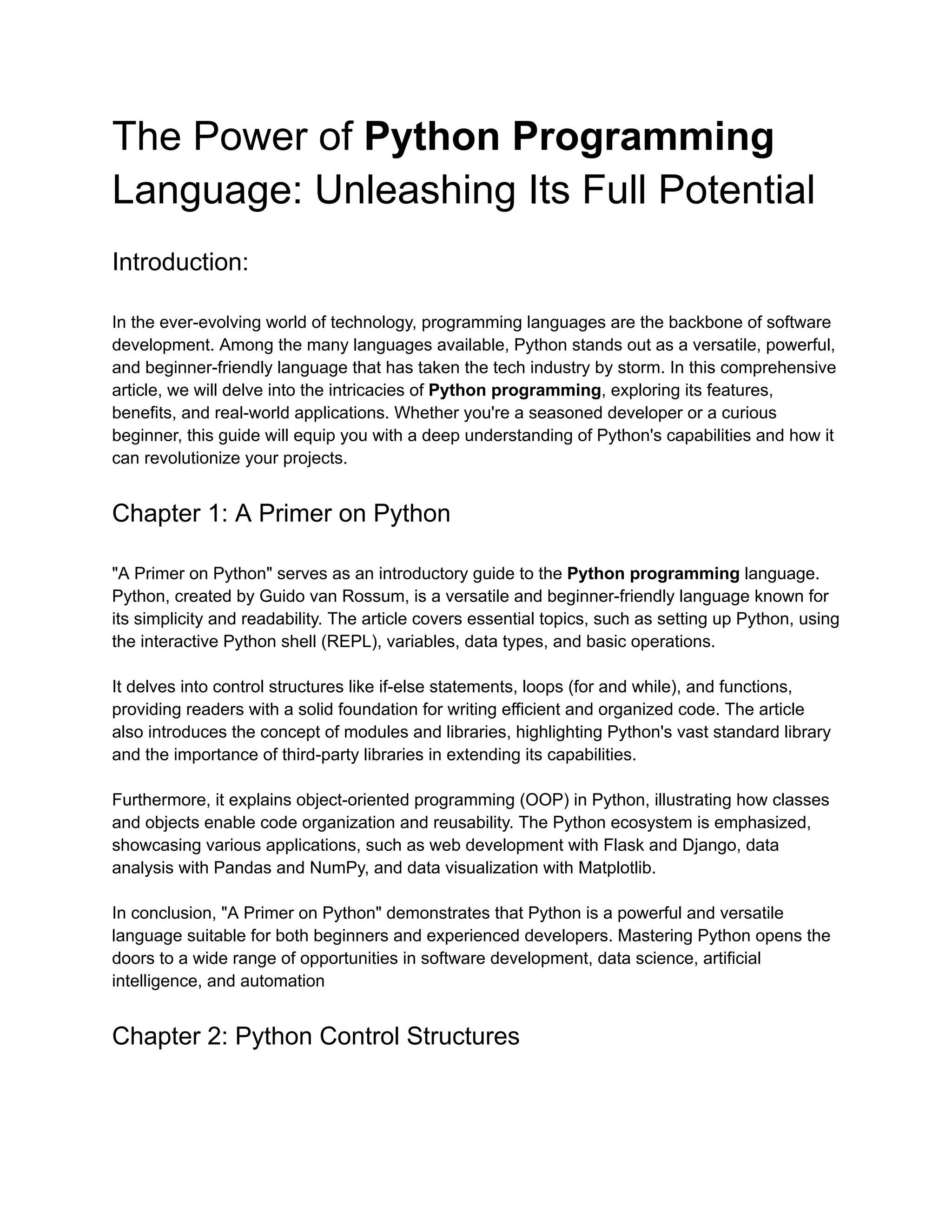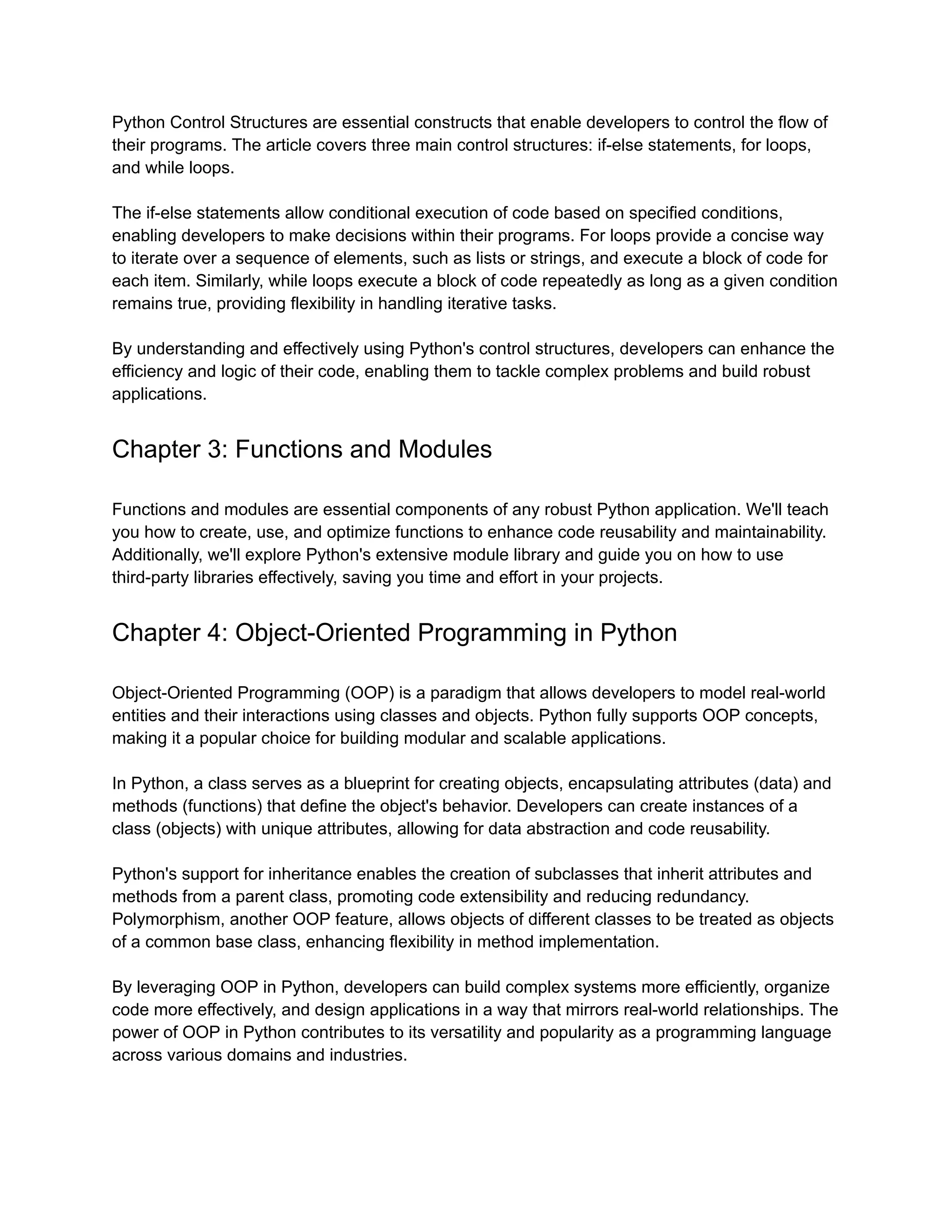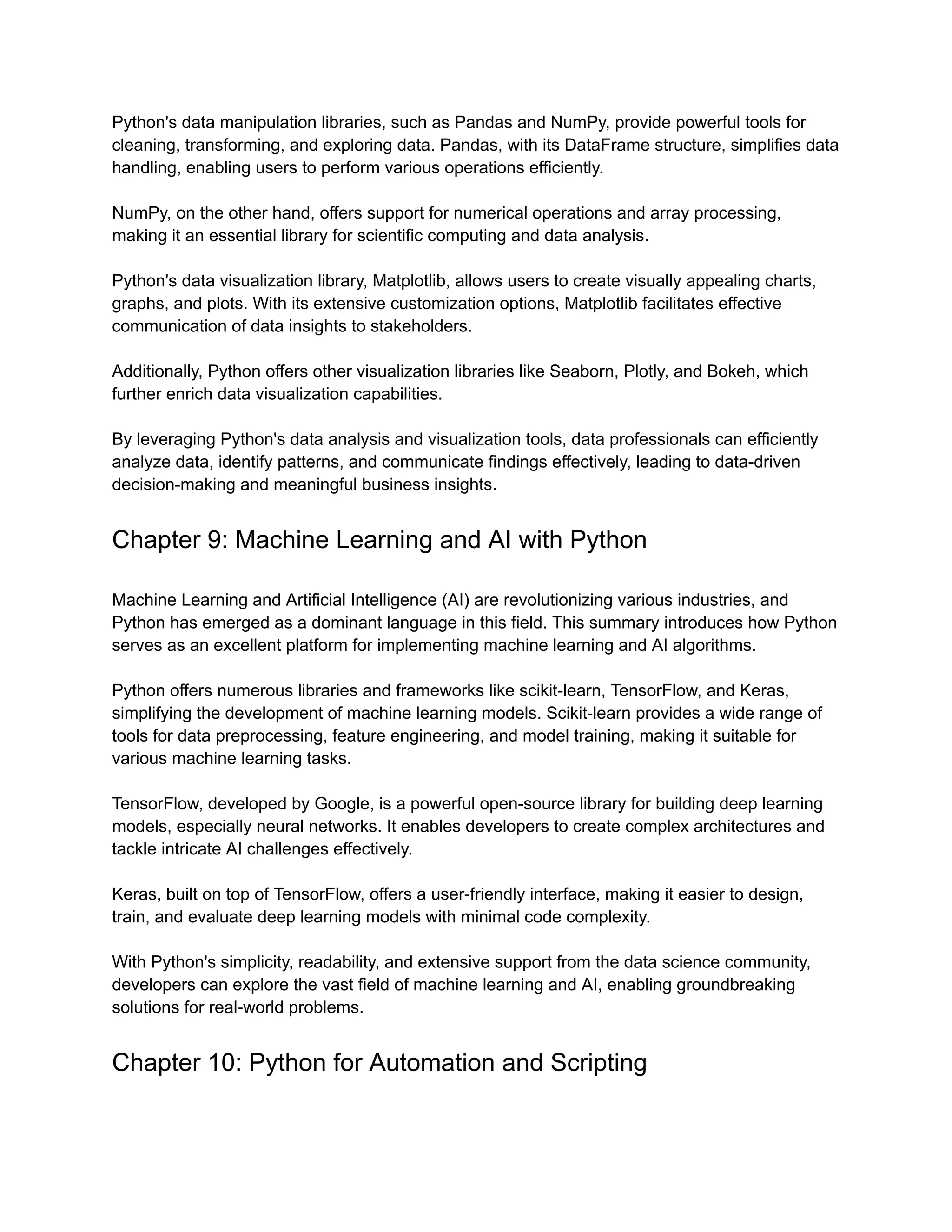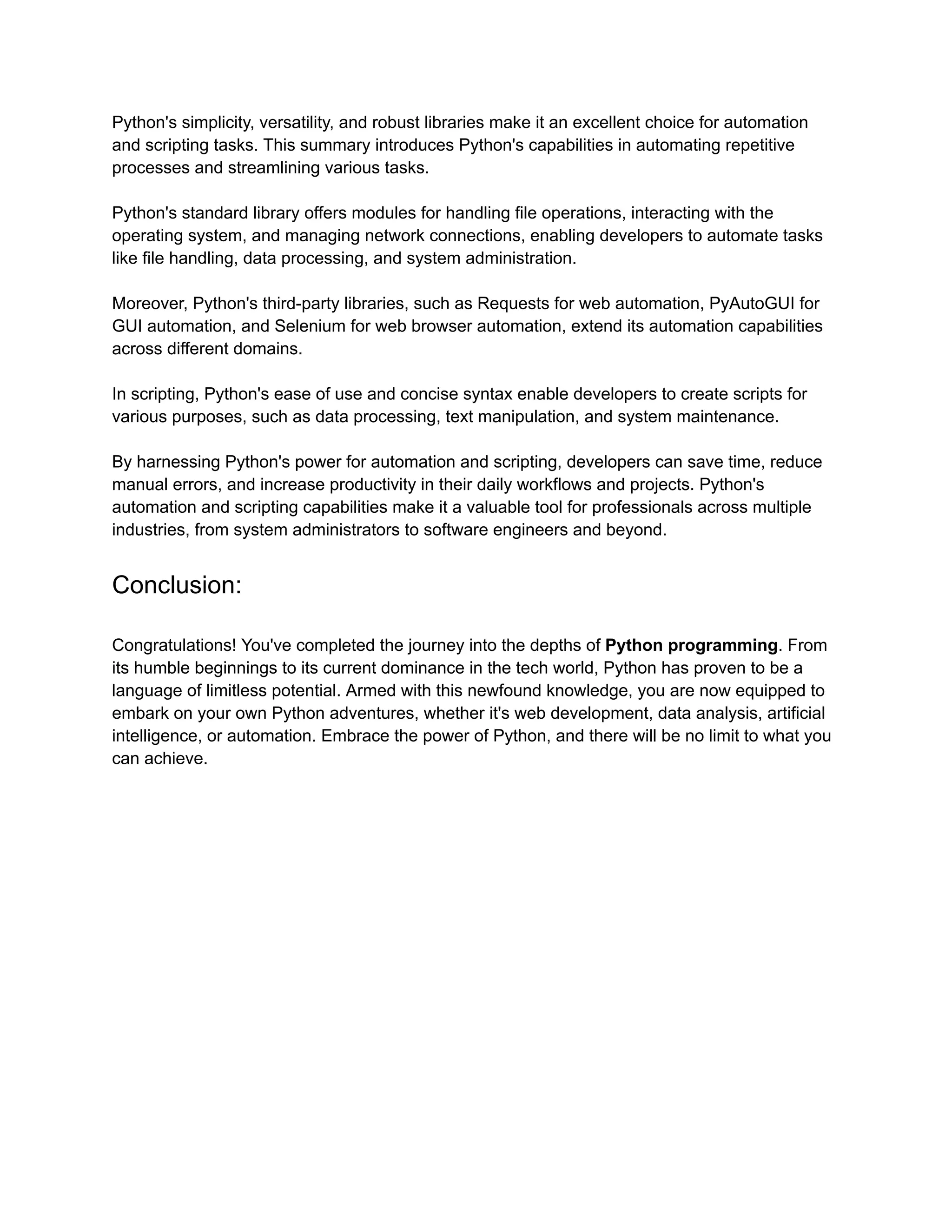This document explores the power and versatility of the Python programming language, covering its features, benefits, and real-world applications across various fields. It includes a comprehensive guide on topics such as control structures, functions, object-oriented programming, data handling, web development, and automation, providing both beginners and experienced developers with essential knowledge to leverage Python effectively. The conclusion emphasizes Python's limitless potential and encourages readers to apply their skills in diverse areas like web development, data analysis, and artificial intelligence.




